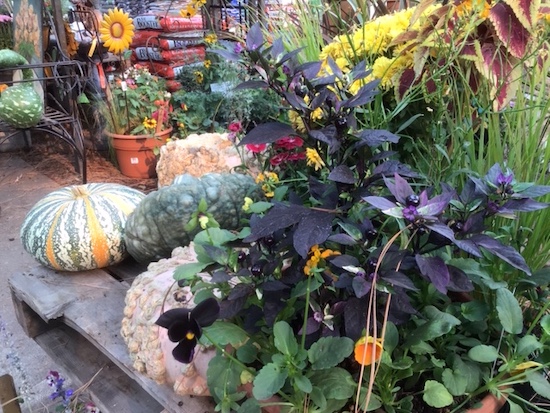
Boy, oh boy, is this year one for the record books or what? As one customer said, it has come down to not if but when our communities will burn. I have friends that have recently lost homes in the Glass Fire, and some of you have been losing income, or maybe even your employment just went up in smoke. A house we worked at for 30 years is gone. It was one of our few remaining maintenance accounts. Depressing, yes, but we have some therapy for that. It is called gardening. Maybe you think, why bother if it’s all going to burn or dry up during power shut-offs and evacuations. I say we can’t let these situations paralyze us for long. Our sanity is on a short leash. Dirt is the answer. I read a study that said dirt has more anti-depressants in it than Prozac. So go on, get dirty.
We are in prime planting time. Trees, shrubs, and perennials love to be planted this time of year. They suffer from less stress as they are not growing as fast as in spring, and they root out faster due to the soil being warmed up all summer long. You save on water, and next year they will be twice as big by the end of the growing season as compared to planted next spring. Ca Natives are best planted this time of year too. Natives are a good way to support our native pollinators and provide diminishing habitat for our local ecosystem. We just stocked up on our wildflower seeds, including pound packages of Ca poppies and Ca wildflower mix. Also available are clovers, alfalfa, vetch, and a non-mow ‘lawn’ seed.
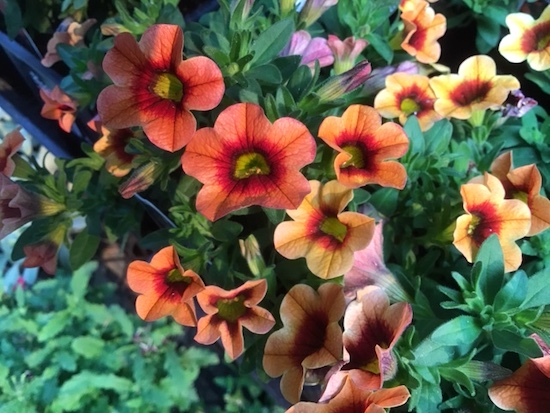
Tis the season for spring-blooming bulbs, pansies and violas, primrose, cyclamen, and ornamental cabbages. If you are re-doing your containers, think about planting some daffodil or tulip bulbs in with your cool-season annuals or perennials. If you saw daffodils blooming in the spring this year and wondered when you can get them, the time is now. Most local garden centers will have them, including us. Other bulbs available now are tulips, saffron crocus, regular crocus, muscari, hyacinth, scilla, paperwhites, and iris. The saffron crocus and iris should be planted as soon as possible. Saffron crocus blooms in the fall. You harvest the red-orange stigmas, and that is saffron. Each flower produces only a small amount, so now you know why saffron is so pricey.
One group of perennials that fit the season are ornamental grasses. They fit with almost any garden theme, from tropical to arid, English to Mediterranean and Asian. A lot of grasses do not flower till fall and are at their showiest now. You can grow them in containers or the ground. I find grasses some of the most maintenance-free things to grow. Fertilize with lawn food and cut back once a year. Even the evergreen grasses look better if trimmed up occasionally. Some of the best grasses for a mixed container are the evergreen smaller types. These would be fine to plant in a container now as they do not turn brown in winter. The best ones for this are the carexes, stipas, and fescues. Mix them up with some bulbs, pansies, cabbage, poppies… you get the idea.

Speaking of grasses, did you know October is one of the two best months in our climate for starting a lawn from seed? April is the other. If you have been waiting for the right time to get a lawn going using seed, it is here. Till and water your area to get unwanted seed to germinate first and get rid of them by hand or with sprays. Good old fashioned white vinegar can kill tiny seedlings on a warm day. A lot of people will add peat moss or Green-All Firmulch to the soil when tilling. Protect your grass seedlings from birds. You might have to put down row-cover fabric to keep them at bay and do not let the area dry out during germination.
If you are planning on growing an edible winter garden and want your plants to be mature enough to produce even in cold weather, then you better get going. If you wait too long to plant, you will not get production until early spring. Starts and seeds are available. You want to get your onion and garlic bulbs in now before the soil gets wet and cold. Too much chance of the bulbs rotting before they start to grow. Don’t forget to add amendments to the soil, even if it was new this spring. Vegetables are hungry plants and need lots of food to grow up big and strong.
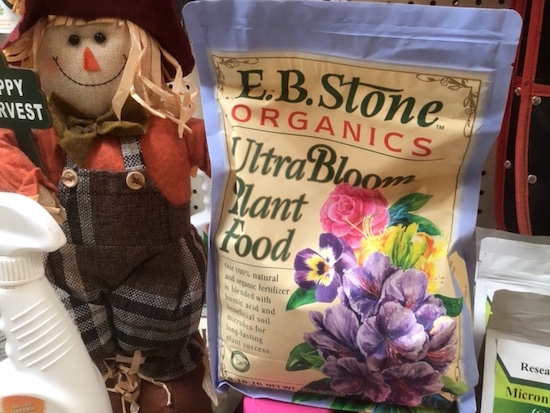
Fall cleanup, besides leaves and needles, of course, includes pulling up the summer garden and cutting back perennials. If you have had any insect infestation this year, it is very important to do a thorough cleanup of leaf and stem debris, along with dormant spraying starting in November. October is 0-10-10 month for spring-blooming ornamentals and fruit trees. This is a no nitrogen fertilizer that promotes disease resistance and better flowering in spring. Spring blooming shrubs that come to mind are lilacs, quince, forsythia, deutzia, white blooming spireas, and viburnums.
Some of us have spent a lot of time indoors due to smoke, heat, and Covid. Houseplants have been a hot item this year and for a good reason. Classrooms filled with plants (and school gardens) are important for our children’s well-being. Studies show that test scores improve, kids are healthier, and ADD symptoms are reduced. They even misbehave less. Plants also help us heal when we are sick. Many children are now learning at home and on a device for hours at a time. Are they getting garden time? Are there houseplants in their home classroom?
Are you a lover of sweet peas? I am, and I still think a vase of cut sweet peas is tops on my list of cut flower arrangements. So simple yet so, well, sweet. In our climate, for big plants and lots of flowers before the hot weather sets in next year, plant them in fall, either by seed or starts. We have starts and seed. My birds love any type of pea, so again keep an eye out. You can seed them indoors. I like to make sure my planting media is well moistened first. Then I put in a seed in each pot and water in. I do not water them again until they break the top of the soil. This way, I know they germinated before I plant them. If they disappear, then I know something ate them instead of wondering why they never came up when in reality, the birds got them before I got a chance to see them.
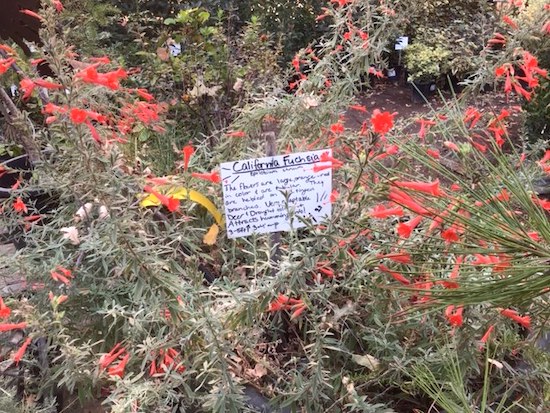
Last but not least, we are not doing a Customer Appreciation Day this year per se. Instead, we will do a three-day weekend sale on October 10, 11, and 12. Our entire inventory will be 25% off for these three days only. We will have a daily drawing for 3 $50.00 gift certificates, and on Monday at closing, we will draw for the grand prize of our favorite large wind chime. Hope to see you there and good luck.
October Specials
20% off the following
- All Roses
- Fruit Trees (not including Citrus or Olives)
- All Ornamental Grasses
- All sizes Echinacea
- All sizes Rudbeckias
Featured Plant of the Month
Camellia sasanqua
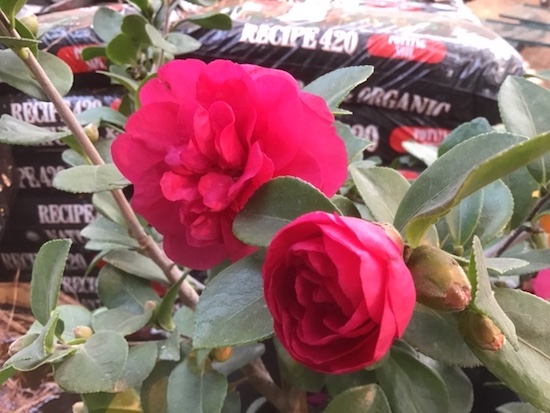
Many of you are familiar with Camellia japonica but not as familiar with other varieties. Not everyone knows that all black teas come from the leaves of Camellia sinensis, a subtropical variety that we do not get here. Camellia sasanquas are known as the Sun Camellias or the Fall Camellias. The different varieties start blooming in the fall into early winter. The leaves and flowers tend to be smaller than the spring blooming japonicas, but just as handsome a foliage plant. The white, pink, or red flowers are usually singles. They are often wider growing than tall, but there are several upright ones as well. It is true that they are more sun tolerant. I saw them planted in Sacramento at the airport against a west-facing wall and was pretty impressed. Of course, they most likely got a daily watering in that exposure. Camellias in the shade can be very drought tolerant once big and established. Best to keep them away from deer as they are not on the resistant list. Look for fall blooming Camellias now at your favorite plant shops.